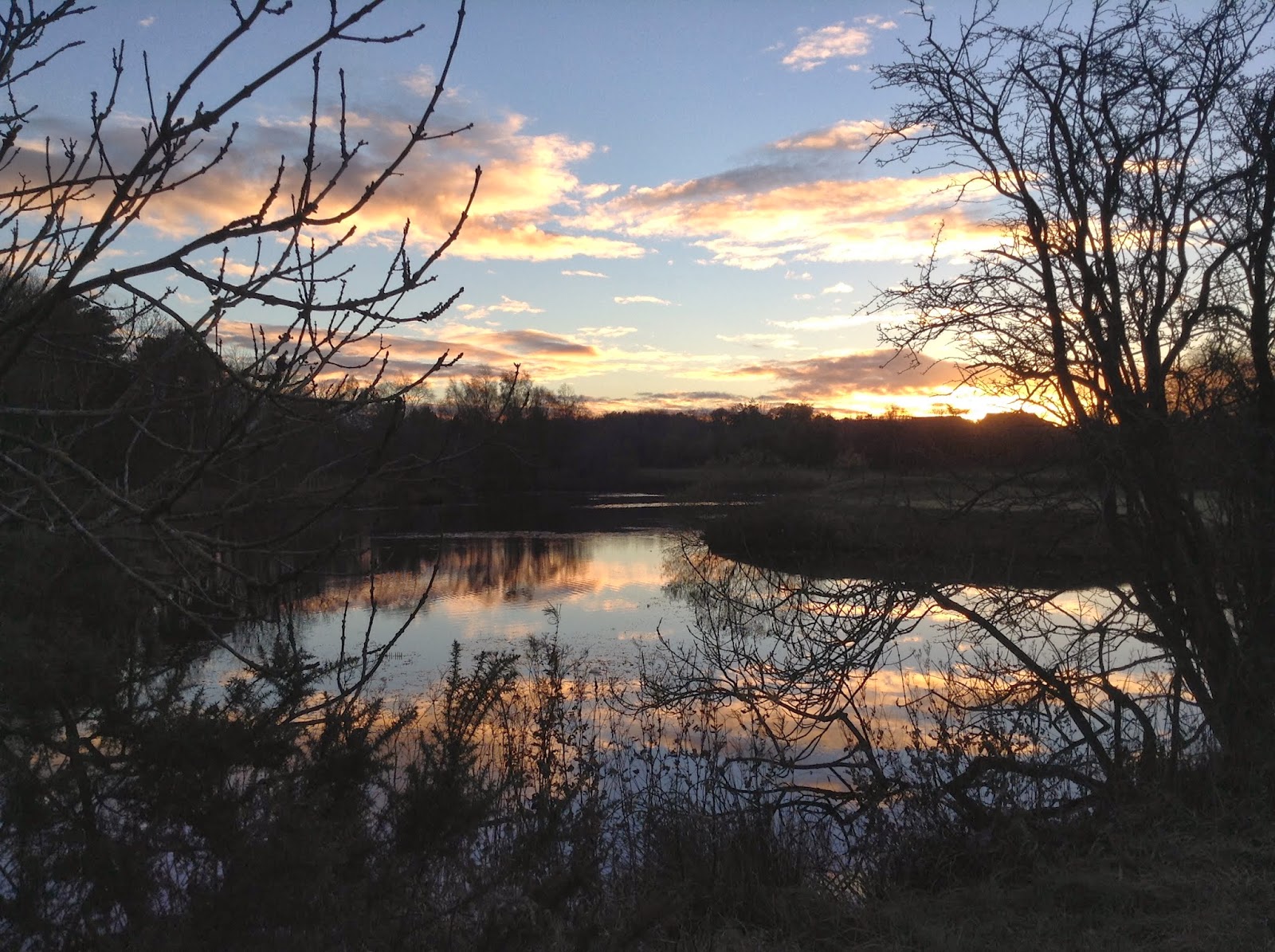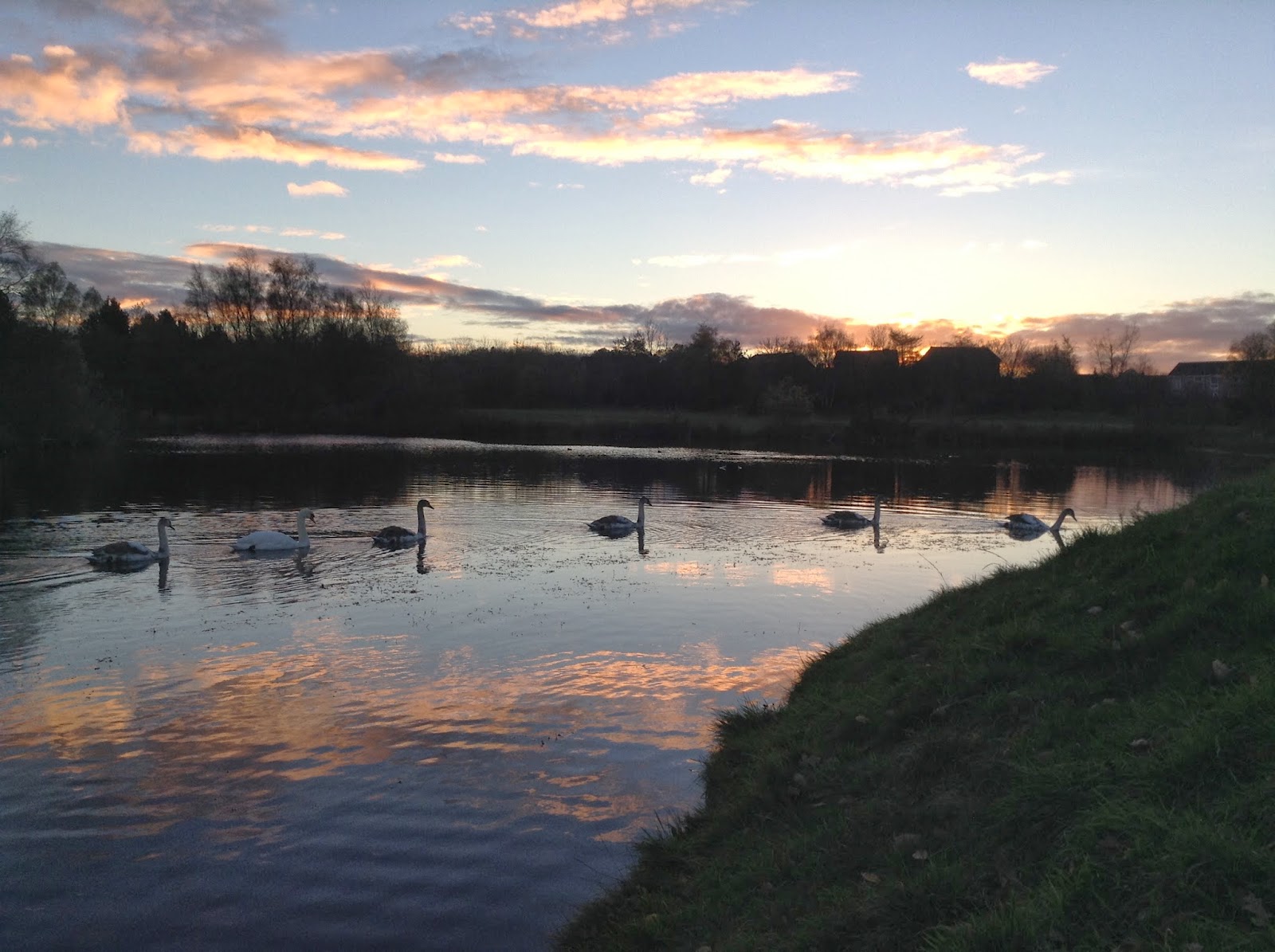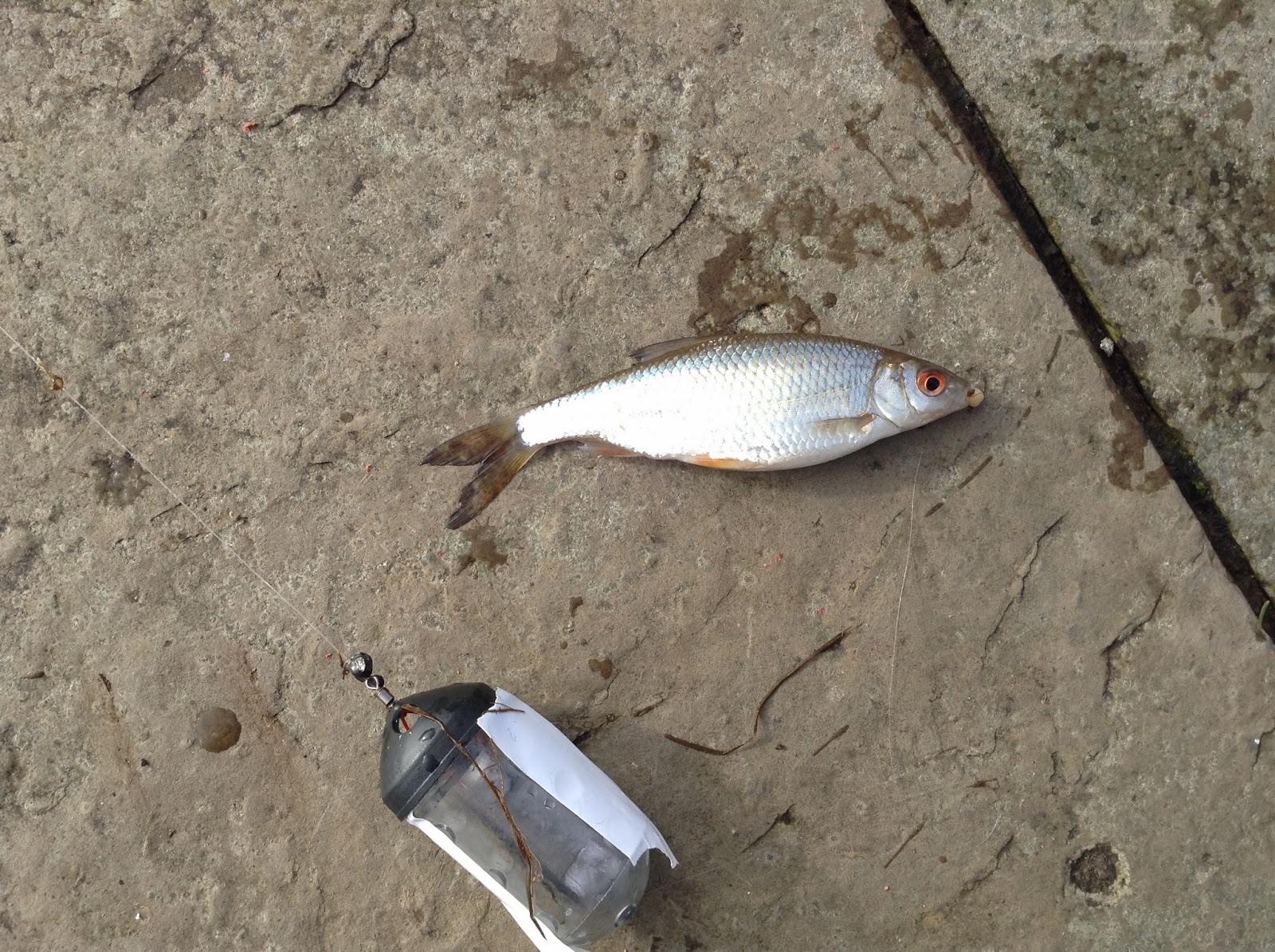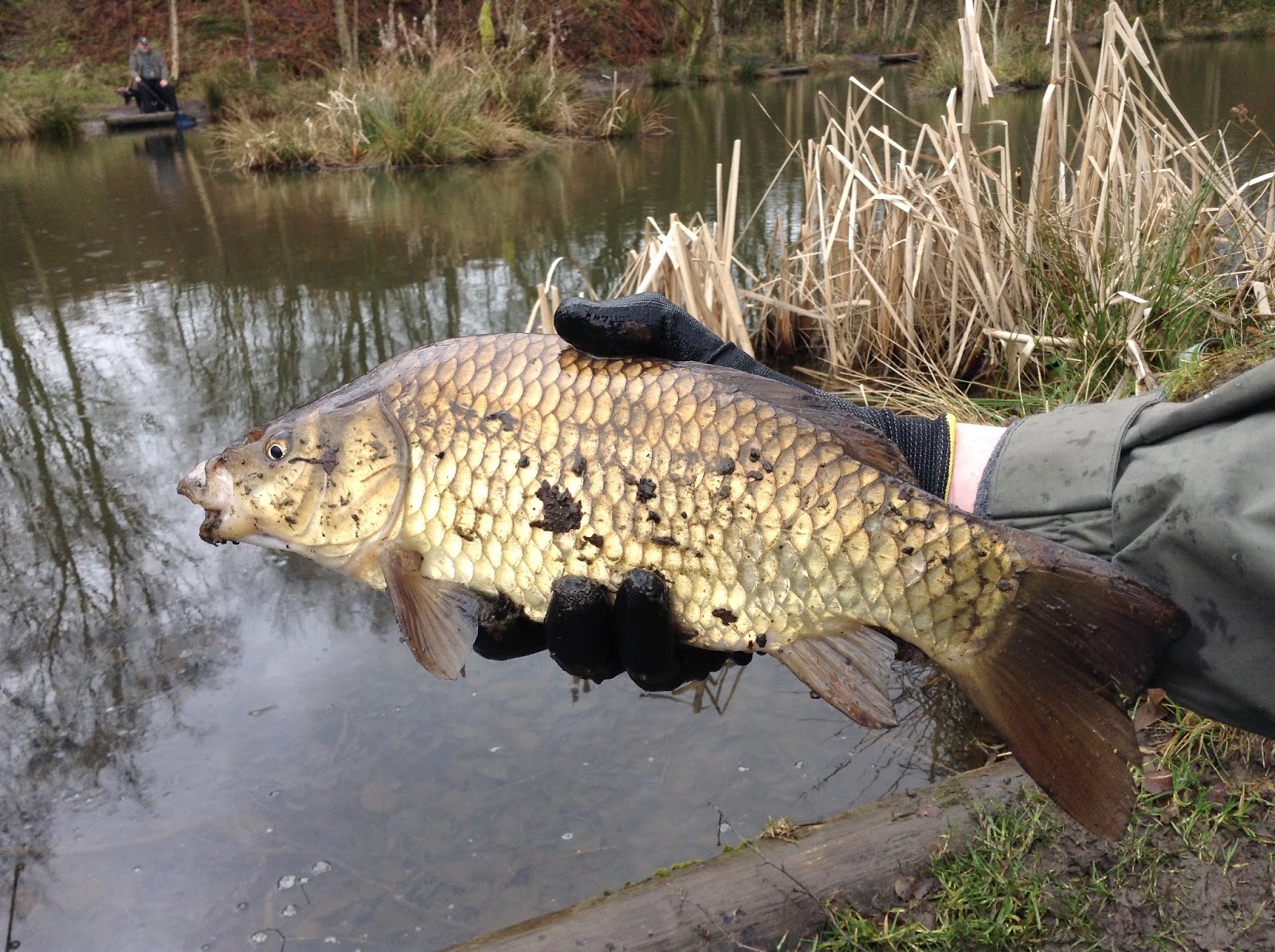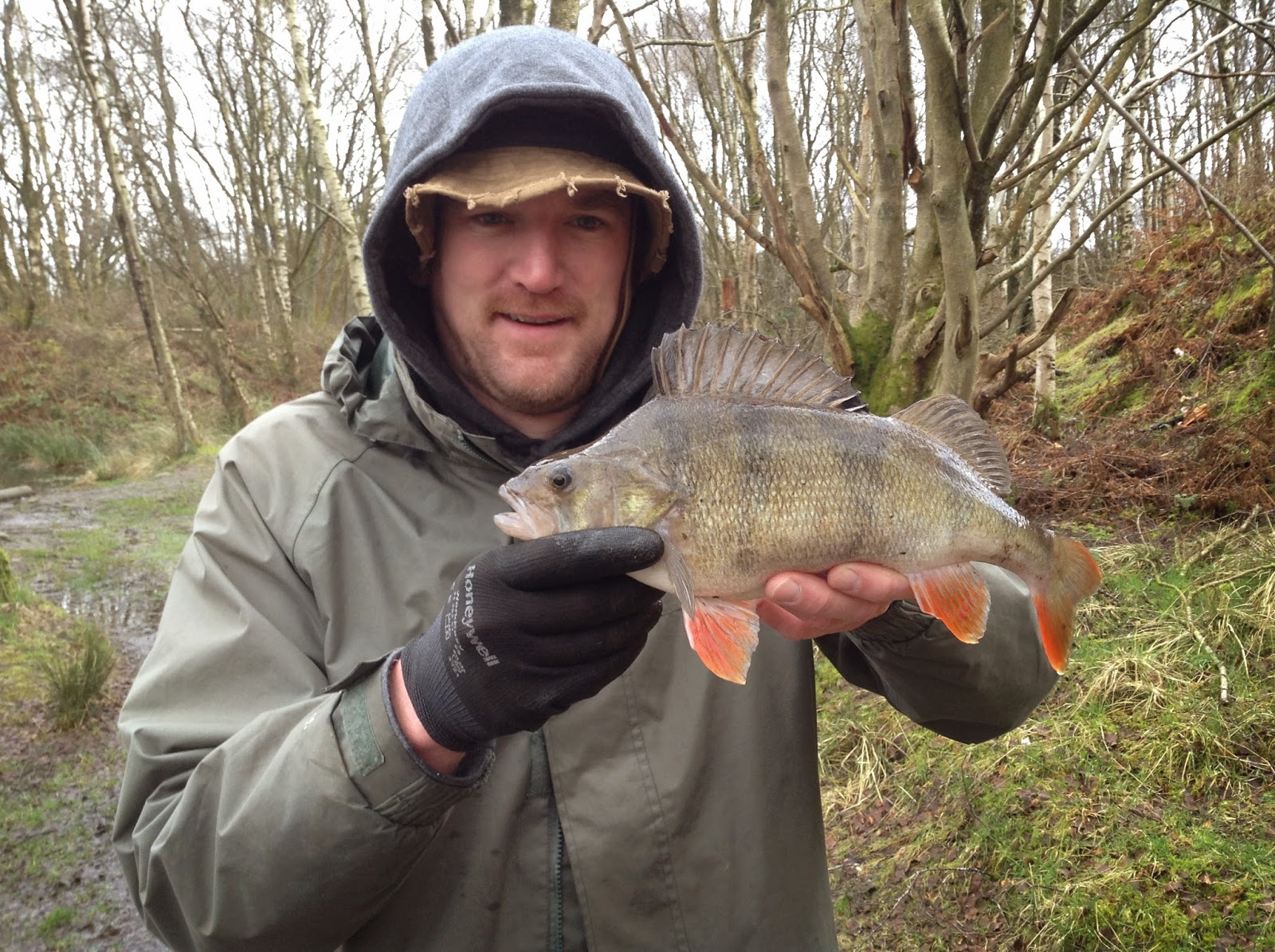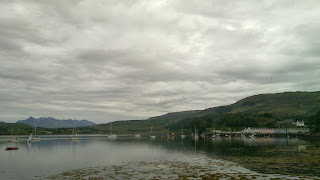 |
| The Black Cuillins , Loch Portree and Portree Harbour |
Spending a lot of time on Skye since July, my base has been it's capital, Portree. This has allowed me to begin exploring around the shore and harbour and I'm seldom disappointed.
Like so many places on Skye, Loch Portree, basically the sea in the bay area where Portree is located, can be almost amusingly picturesque. The harbour front itself is classic picture postcard material whilst the views south to the Cuillin mountains, east towards Ben Tianavaig and beyond to the adjacent island of Raasay, or north past the black Rock where Bonnie Prince Charlie is said to have fled from government troops, up towards the imposing cliffs of Scorrybreac, make it an absolutely outstanding place to lose some time before nightfall.
 |
| My first Portree Pollock |
These have been the most numerous of my sessions on Skye. I've been treated to the sight of a White Tailed Eagle soaring high above me and often spotted the odd seal hanging around the fish cages towards the sound of Raasay. Out in Loch Portree the youths from the sailing club are often out practicing in the conducive conditions. I think it gives a real insight into how past generations on Skye utilised this, like so many other sheltered sea lochs around the 'Winged Isle', to hone their sea faring skills in much the same way in the old Birlinns that frequented these waters in times gone by.
A quick mention here for the other wildlife you find in abundance, namely, the Midgie. In the absence of any wind, for any session to last more than a couple of casts you will absolutely need a midgie net.
 |
| Come back in a couple of years |
My first few sessions involved hurling a jighead as far as possible (3.5g, so quite small) and jigging some Isome back at varying depths and speeds. Interest was frequent and I'd take some small Pollock and Coalfish in between the wee blighters nicking my lure.
The first few sessions were at the higher end of the tide. The Black Rock on the cornere of the sea loch is said to be a good mark, but is only accessible at low tide. For my first visit out there, I'd have to wait.
 |
| I doubt this wee one was even 3 inches |
One evening was spent fishing my Isome into the clear waters of the harbour front itself. Actually being able to see the fish reacting to your offerings is extremely informative. Whilst hoping for a flattie of some sort, instead I was again amongst small coalies and Pollock. Or so I thought. One evening whilst out with Hutch at Cove harbour, he brought ashore a bay cod no more than six inches, making me realise that one of the comedically small Pollock I thought I'd caught at Portree harbour, was actually my first ever cod!!!!
Echoing the sentiments of the great species hunter himself, the sheer frequency of small Coalfiish and Pollock that seem to be almost everywhere you try in the sea around the coast can only be a good sign for the future.
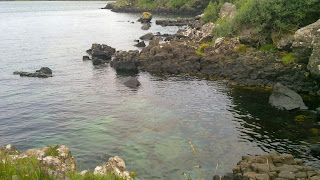 |
| Gully to the right |
Back round between the Black Rock and Scorrybreac I variously observed the clarity of the sea under normal conditions right through to the dark colouration after heavy rain when the peat stained spate rivers that are abundant on Skye empty into the sea. On the much more frequent clear water days, the sea bed can be seen to alternate between weed covered rocks and sandy bottoms. Some tantalising gullies dissect the three or four outcrops where fishing is most possible. Pollock and Coalfish up to 8 or 9 inches have been the staple round here.
 |
| Gully to the left |
 |
| Grey Gurnard |
However, on my second last visit, finally the tide was low in the evening and I was able to scurry over the sea weed covered rocks and onto the Black Rock itself. I quickly discovered that the optimum place for bites was on the sand just outside the fringe of weed that skirts the rocks. Here I hooked my second baby cod, then a wee coalie, before something altogether different chomped my Isome and was brought to the surface. Confused I took a quick pic in the fading light and fired it off to Hutch asking "Whats this?". "A Grey Gurnard" came the reply from the walking fish encyclopedia, "they're usually red" he followed up. I was stoked, a brand new species. Grey, red or fluorescent purple, didn't matter to me.
In discussion with Hutch, he advised that the amount of missed bites I was reporting might be negated with a drop shot tactic instead of the jighead. The next night I was back with a drop shot set up and a better camera. First fish was a wee Pollock making that four fish, four different species in a row from the Black Rock. Then I tempted another Grey Gurnard, getting a much better snap for posterity. More Coalies and Pollock followed. Whilst the drop shot was hooking more fish, my rod and especially reel were making actual bite detection less successful than it should be. The LRF would make its way to Skye with me the next time.
 |
| Baby Cod (or Whiting?) |
And so it did. I arrived to find relatively high high tides over 5 metres and began covering the sandy bottoms north of the Black Rock (inaccessible). Every tap and take was felt, but with every assault on my hook, I was losing Isome and was quickly going to run out. More Coalies and Pollock to about 8 inches continued to oblige, but I endeavoured to source some prawns instead for the following night.
 |
| Getting (a bit) bigger - Pollock |
Encouragingly, but frustratingly, I also witnessed a Salmon leaping clear a bit further out. I know they do show in the sea around Skye awaiting the rivers filling up and it is extremely tantalising to know they are there. But I wouldnt like to hook something that big with that much space to swim around in on the LRF. So the next night I was back with prawns for the LRF and my spinning rod for distance casting with a lure. While a Salmon is still an outside chance, the lure I'd use was the sand eel I'd been advised were good by the gent in Dunvegan's tackle shop, and that the other guy had been catching decent Pollock on at Neist Point.
 |
| Coalfish/Coalie/Saithe |
I began with the prawns and was inundated with interest feeling every tap and take. Every fish landed was a Coalfish and they all measured as good as 12 inches. A distinctly different demographic with these fish giving a great fight on the light tackle. I also chucked the lure out on the other rod, but despite a few follows and half hearted takes by smaller Coalies or Pollock, that elusive larger specimen failed to materialise.



